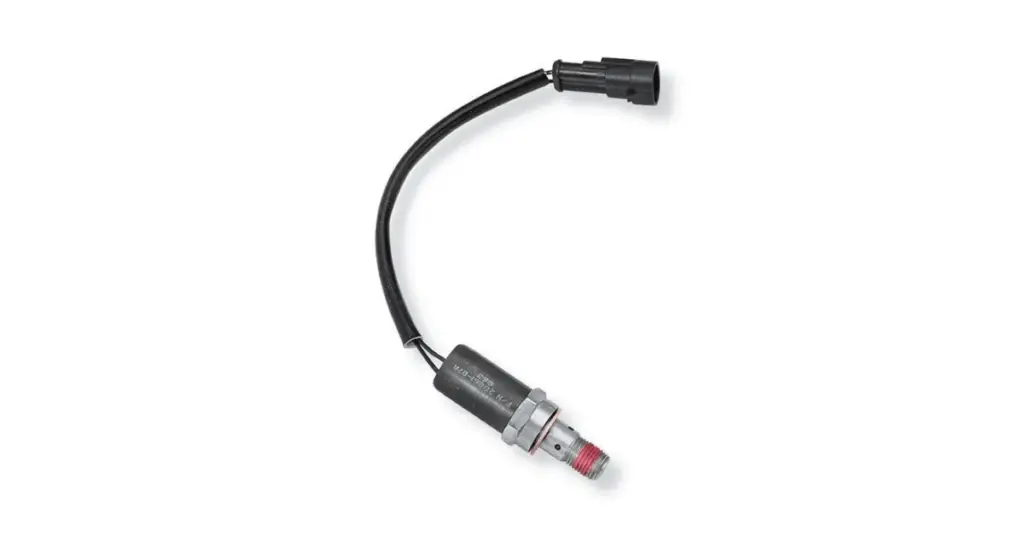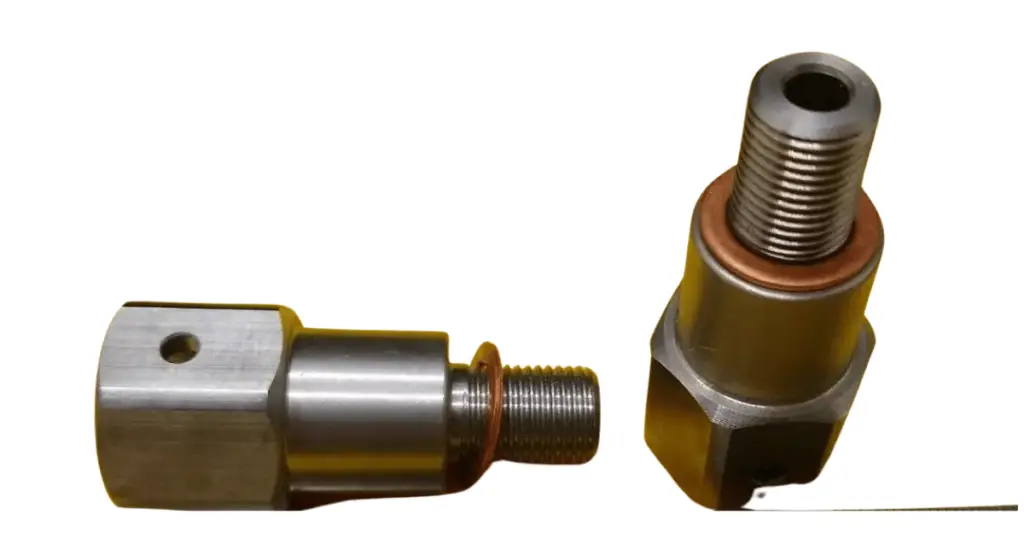As an avid Harley rider, I know the thrill of the open road, the exhilaration of the engine’s roar beneath me, and the sense of freedom that comes with every ride. But, like any Harley enthusiast, I am also all too familiar with the mechanical problems that can arise, particularly the dreaded Harley automatic compression release (ACR) problems.
For those who are new to the Harley scene, or even seasoned riders who haven’t delved deep into the intricacies of their bikes, the Harley ACR is a critical component of your engine’s health and performance. It’s an automated system used in Harley Davidson’s high-compression engines to facilitate easier starting. The ACR system helps reduce the compression pressure during the engine start-up, making it smoother and less stressful for the engine components.
Understanding how this system works, its common problems, and how to fix them can go a long way toward ensuring a smooth and enjoyable ride. Over the years, I’ve encountered my fair share of Harley ACR problems and have learned a thing or two about how to deal with them. In this article, I will share my knowledge and insights to help you better understand and manage your Harley’s ACR system. Keep reading and let’s get to it!
Understanding the Function of Automatic Compression Release in Harley Engines
The ACR system in Harley engines plays a vital role in maintaining the longevity and performance of your bike. During the start-up, particularly in cold conditions, the high-compression engines of Harley Davidson bikes can experience a tremendous amount of stress. The ACR system helps alleviate this stress by reducing the compression pressure in the cylinders, making the engine start-up process easier and less damaging to the engine components.

The ACR system operates automatically, activating when the engine is turned off and deactivating once the engine has started and is running smoothly. This automatic operation ensures that the engine is protected from excessive compression pressure every time you start your bike, without requiring any manual intervention from you.
That being said, like any mechanical system, the ACR can develop problems over time. These problems can negatively impact your bike’s performance and, if left unchecked, can lead to significant engine damage. Understanding these potential problems, their causes, and how to address them is crucial in maintaining your bike’s health and performance.
Common Harley Automatic Compression Release Problems
There are several common Harley automatic compression release problems that riders may encounter. One of the most prevalent issues is the ACR system not activating or deactivating correctly. This can lead to higher compression pressure during start-up, which can cause damage to your engine or make it harder to start your bike.
Another common issue is the ACR solenoid failure. The solenoid is an integral part of the ACR system and is responsible for controlling the activation and deactivation of the system. If the solenoid fails, the ACR system cannot function properly, leading to potential engine damage.
In some cases, riders may also experience a leak in the ACR system. This can result in a loss of compression, which can cause poor engine performance or difficulties in starting the engine. It’s also worth noting that these common problems can often be symptomatic of more serious underlying issues, such as worn-out engine components or electrical faults.
Other Harley Problems to Be Aware Of:
- The Exhaustive List of Common Harley Sportster Problems
- The Dreaded Harley Bad Compensator Symptoms Get Revealed
- Harley Davidson Fuel Injection Problems: Skip The Forums
- Harley Fuel Pressure Regulator Symptoms: Complete Overview
- Harley Oil Pressure Problems? Read This! (Help Is Here)
- Harley Davidson Evolution Engine Problems Get Revealed
- Thundermax Tuner Problems: A Comprehensive Overview
Expert Analysis: Causes of Harley ACR Problems
Harley ACR problems can be caused by several factors. In many cases, these issues can be traced back to normal wear and tear. Over time, the components of the ACR system can wear down, leading to system failures or malfunctions.
Another common cause of ACR problems is poor maintenance. Like any mechanical system, the ACR requires regular maintenance to ensure its proper function. Neglecting this maintenance can lead to problems such as solenoid failures or leaks.
Electrical issues can also lead to ACR problems. The ACR is an electrically controlled system, and any faults in your bike’s electrical system can disrupt the ACR’s operation. Similarly, mechanical issues with other parts of your engine can also impact the ACR system, leading to poor performance or system failures.
Harley ACR Symptoms: What to Watch Out For
There are several symptoms to watch out for that can indicate Harley automatic compression release problems. Difficulty in starting your bike, particularly in cold conditions, can be a sign of ACR issues. This is because the ACR is designed to aid in start-up, and problems with the system can make this process more difficult.
Another symptom is poor engine performance. If your bike’s engine is not running as smoothly as it should, or if you’re experiencing a loss of power, this can be indicative of ACR problems. Additionally, unusual noises, such as knocking or pinging sounds, can also be symptomatic of ACR issues.
In some cases, you may also notice a leak in the ACR system. This can often be spotted as a wet or oily patch around the ACR components. It’s worth noting that these symptoms can often be indicative of more serious underlying issues, so it’s important to address them promptly to prevent further damage.
How to Diagnose Harley ACR Issues
Diagnosing Harley ACR issues can be a complex process, requiring a thorough understanding of the ACR system and its operation. The first step in diagnosing ACR issues is to visually inspect the system for any signs of damage or leaks. This can often help identify any obvious problems that may be causing the ACR to malfunction.
The next step is to test the ACR system’s operation. This can be done by attempting to start your bike and observing how it performs. If the bike is difficult to start, or if the engine doesn’t run smoothly, this can be indicative of ACR problems.
It’s also worth checking the electrical system, as electrical faults can often lead to ACR issues. This can be done by testing the electrical connections and checking for any signs of damage or corrosion.
Finally, it’s important to check for any mechanical issues that could be impacting the ACR system. This can involve inspecting the engine components for any signs of wear or damage.

Expert Solutions to Harley Automatic Compression Release Problems
Fixing Harley automatic compression release problems can often require expert knowledge and skills. In many cases, these issues can be resolved by replacing worn-out or damaged components. This can involve replacing the ACR solenoid, the ACR valves, or any other parts of the system that may be faulty. However, recent developments have brought to light the alternative option of installing manual releases in replacement for the stock bike compression releases. Or as a temporary remedy, you can remove the spark plugs to alleviate the compression inside the engine. It’s worth noting though, the spark plugs may not be easy to remove due to the built up compression. Proceed with caution and never forcefully remove a spark plug.
In some cases, it may be necessary to repair or replace parts of your bike’s electrical system. This can involve replacing damaged wires or connectors, or fixing any electrical faults that may be disrupting the ACR system’s operation.
It’s also worth noting that regular maintenance can go a long way in preventing ACR problems. This can involve regular inspections of the ACR system, cleaning the system components, and replacing any parts that are showing signs of wear.
Preventive Measures: Maintaining Your Harley’s Automatic Compression Release
Preventive maintenance is a key aspect of keeping your Harley’s ACR system in good working order. This involves regular inspections of the system to identify any potential issues before they can cause problems. It also includes regular cleaning of the system components to prevent the build-up of dirt and debris, which can cause the system to malfunction.
Regular replacement of worn-out parts is also important. Over time, the components of the ACR system can wear down, and replacing these parts before they fail can help prevent problems down the line. It’s also important to ensure that your bike’s electrical system is in good working order, as electrical issues can often lead to ACR problems.
Finally, it’s worth noting that regular servicing by a qualified professional can go a long way in maintaining your bike’s health. A professional can often spot potential issues that you may miss, and can provide expert advice on how to address these issues. They can also advise you on the potential for using manual releases in lieu of the stock compression releases.
When to Seek Professional Help for Harley ACR Problems
While many Harley ACR problems can be resolved with a bit of knowledge and elbow grease, there are times when it’s best to seek professional help. If you’re experiencing persistent ACR problems that you can’t seem to fix, or if you’re not confident in your ability to diagnose and repair these issues, it’s often best to consult a professional.
A professional can provide expert advice and guidance, and can often fix issues more quickly and effectively than you might be able to on your own. It’s also worth noting that some ACR problems can be symptomatic of more serious underlying issues, and a professional can often identify and address these issues.
Conclusion: Ensuring a Smooth Ride with a Functional Harley ACR
In conclusion, understanding and managing Harley automatic compression release problems is crucial in maintaining your bike’s health and performance. With a bit of knowledge and regular maintenance, you can keep your ACR system in good working order and ensure a smooth and enjoyable ride.
Remember, prevention is often better than cure. Regular inspections, cleaning, and replacement of worn-out parts can go a long way in preventing ACR problems. And when in doubt, don’t hesitate to seek professional help. After all, your Harley is more than just a bike – it’s a passion, an experience, and a lifestyle.